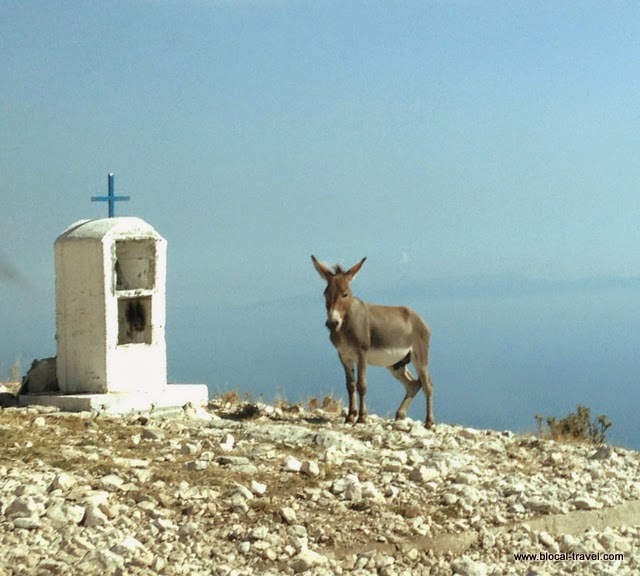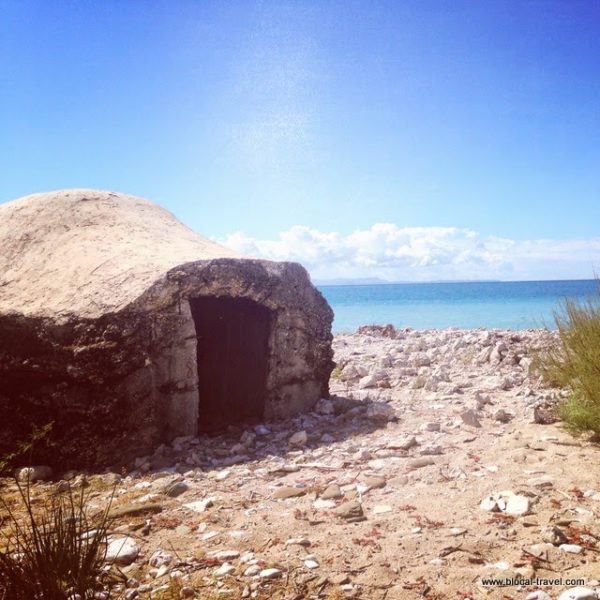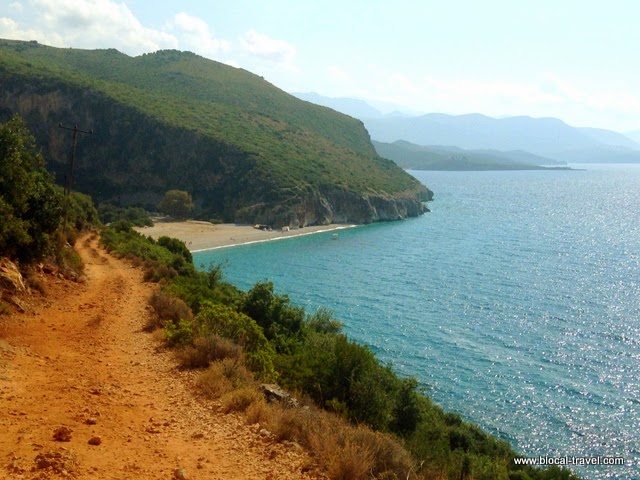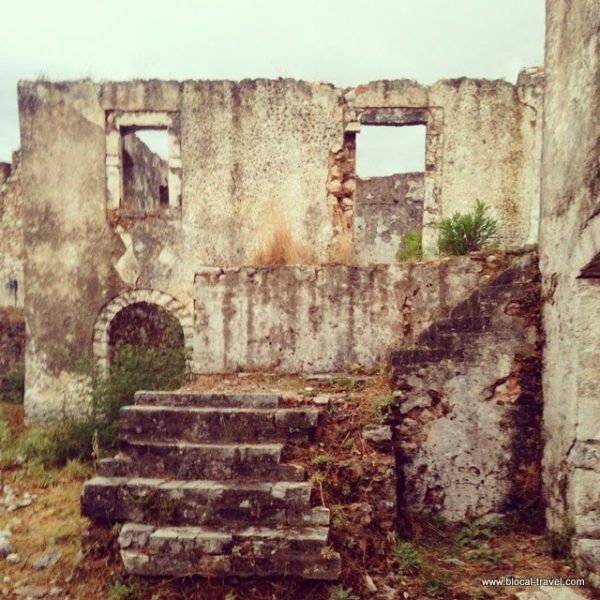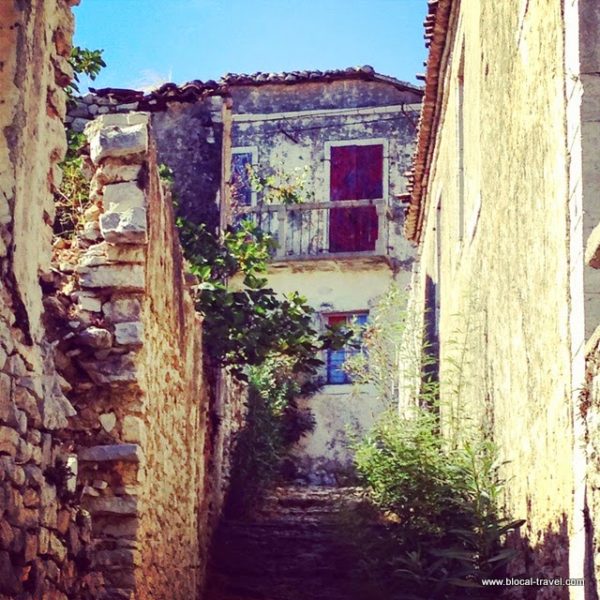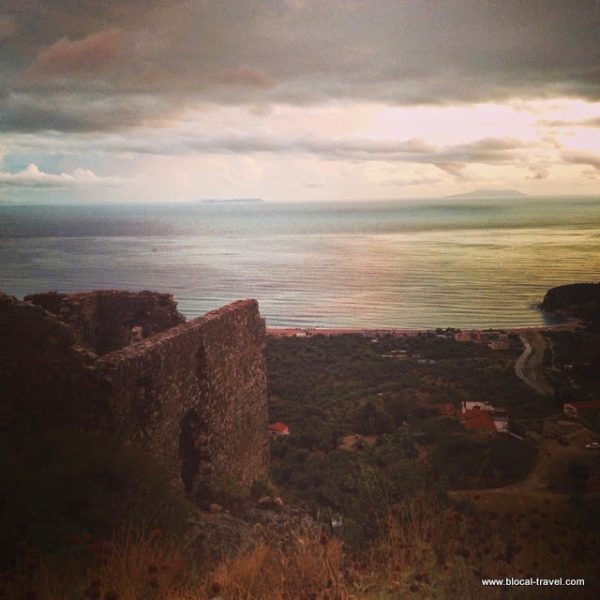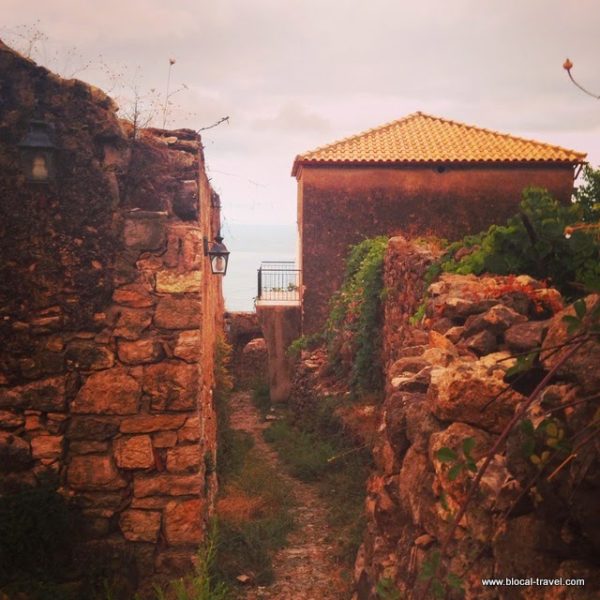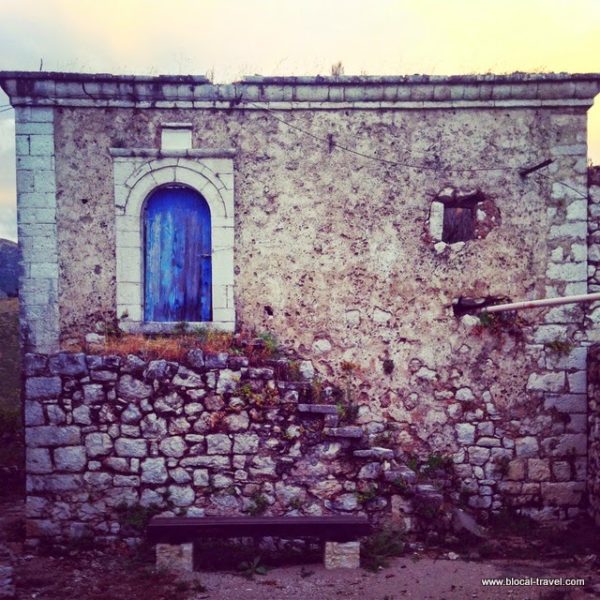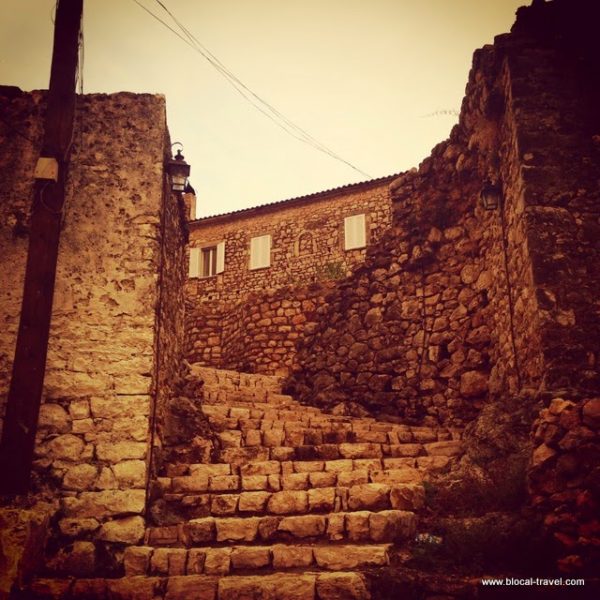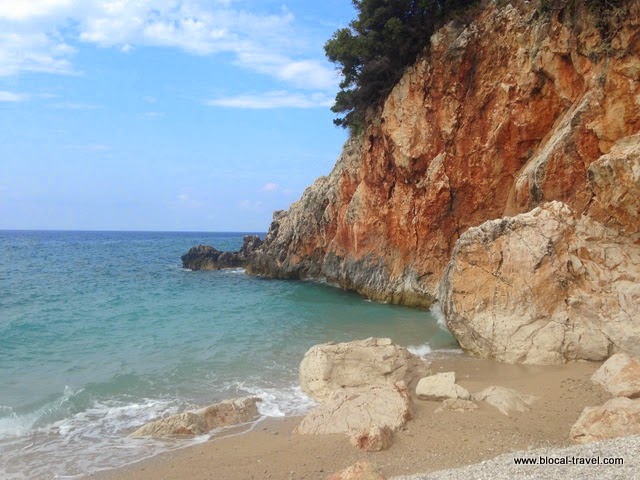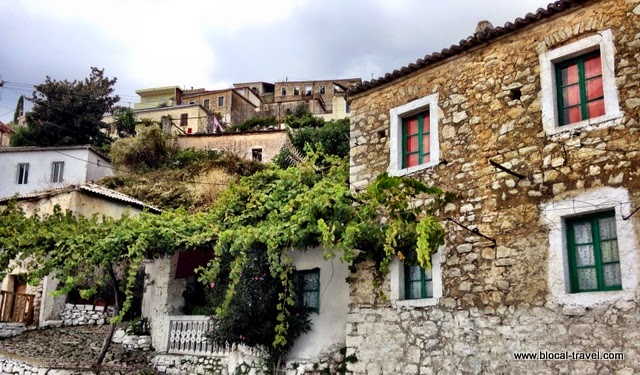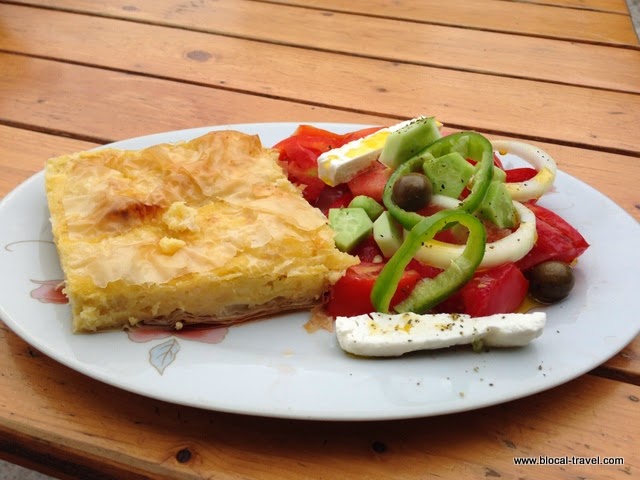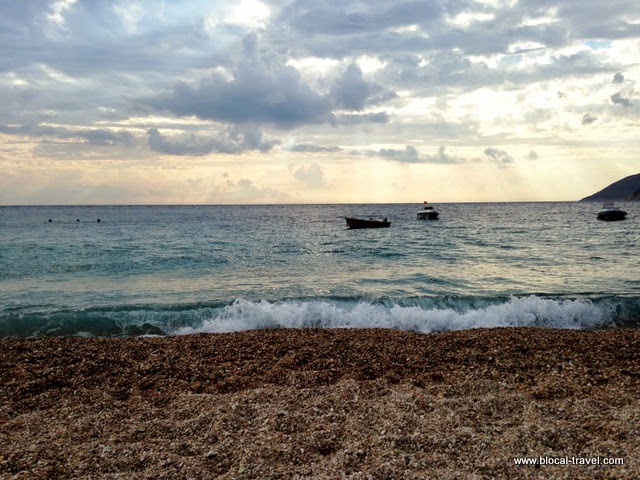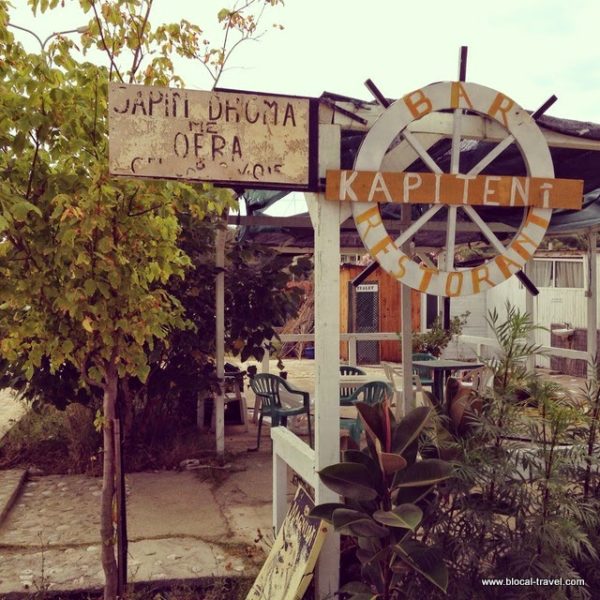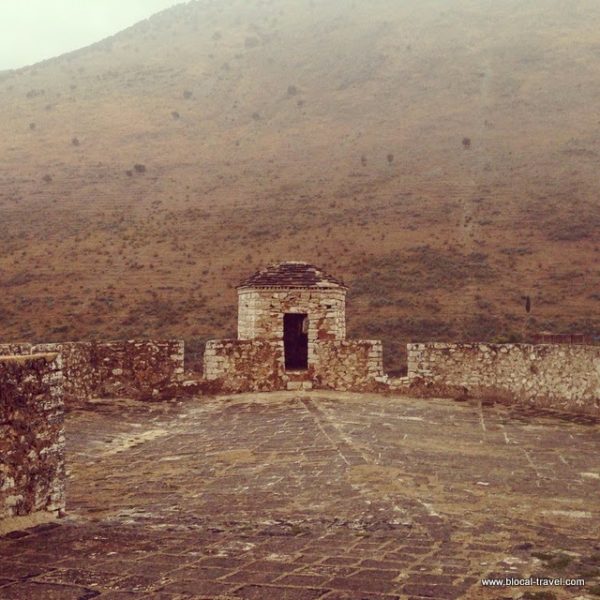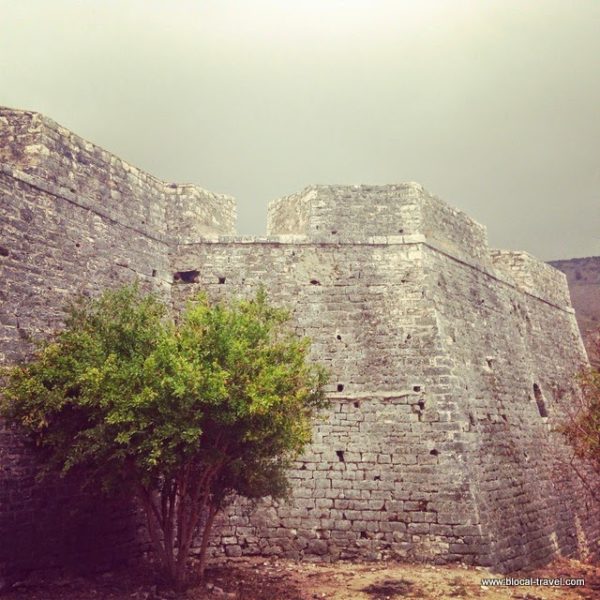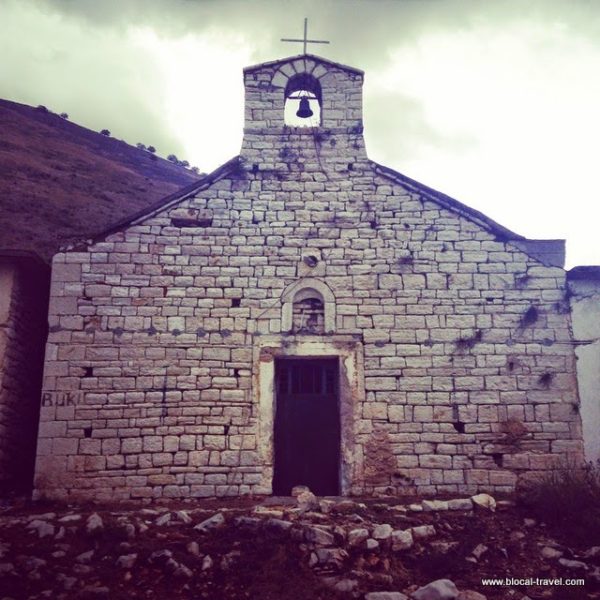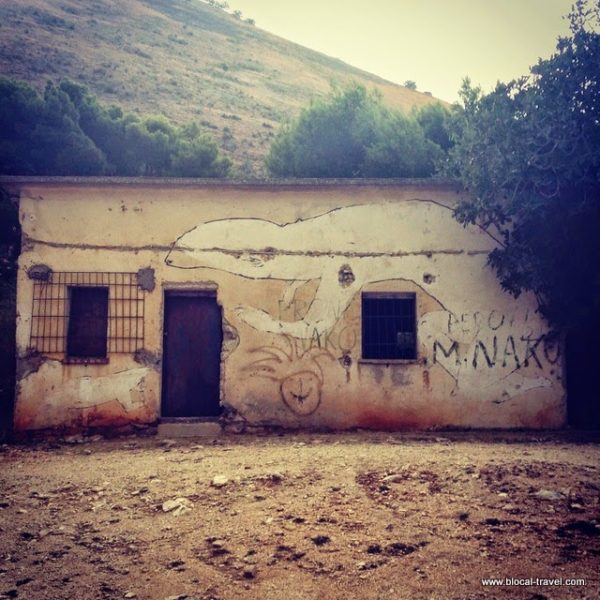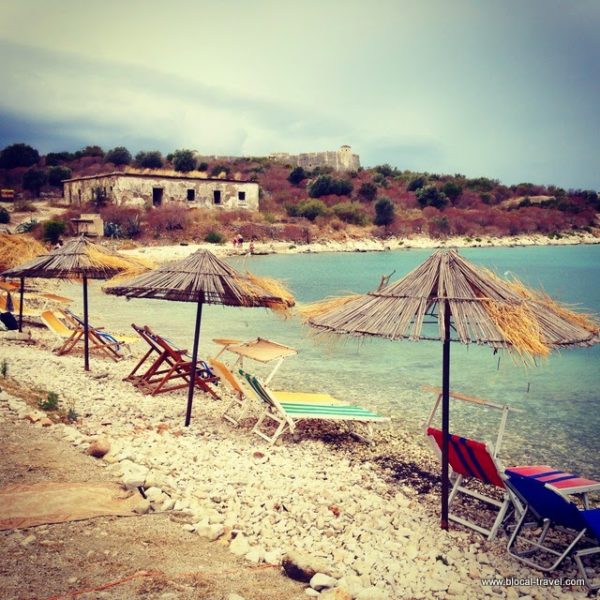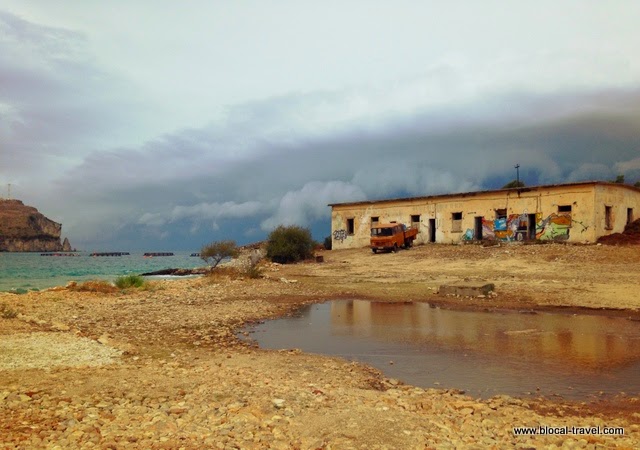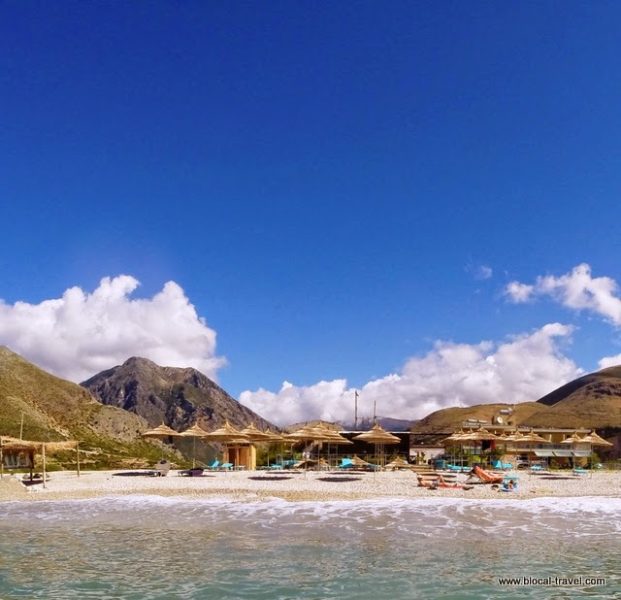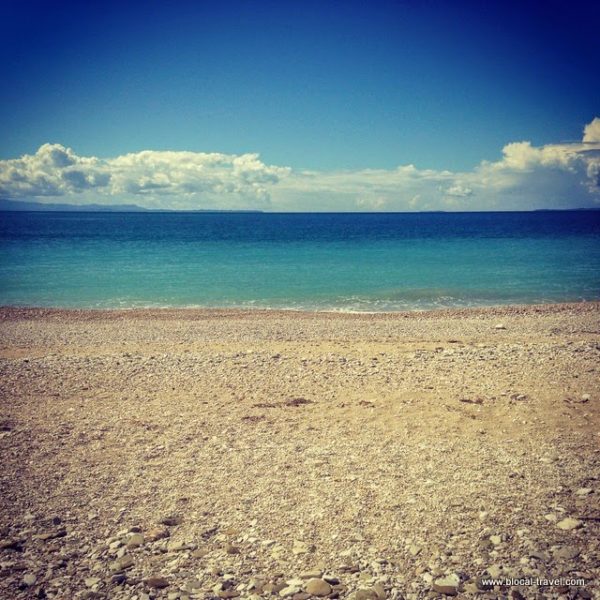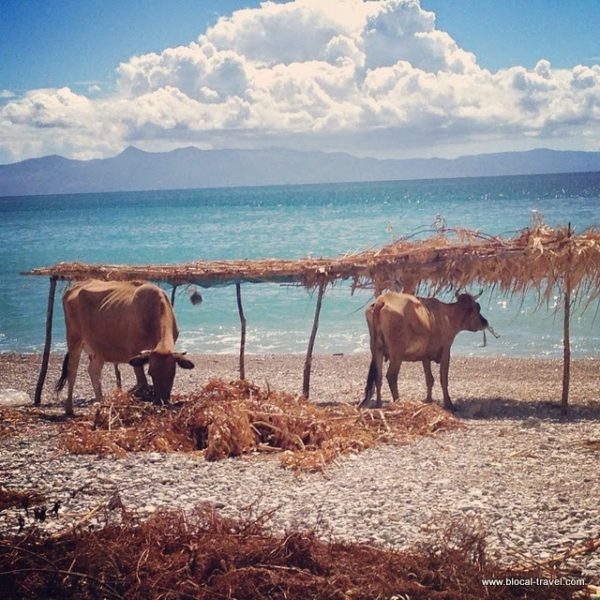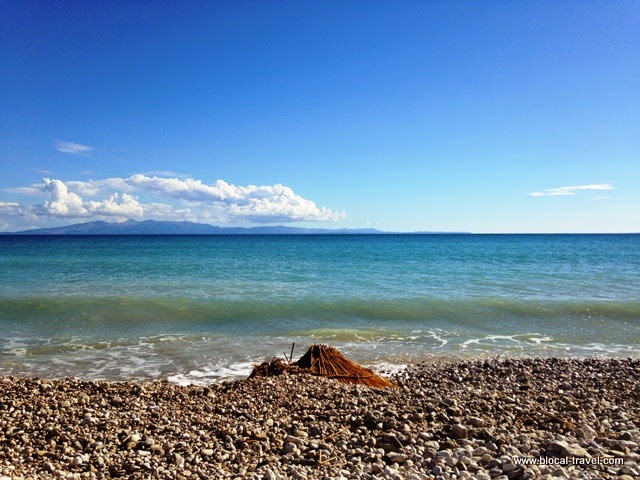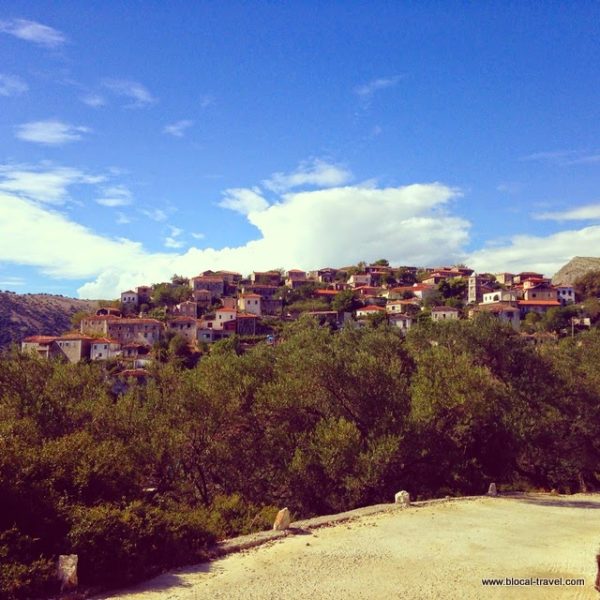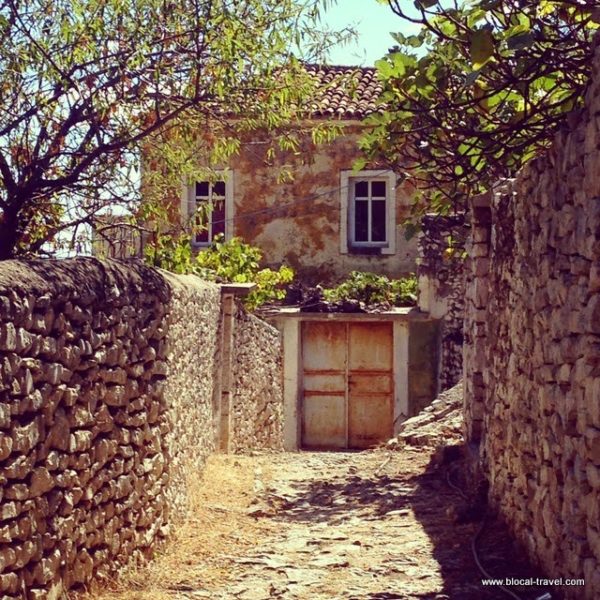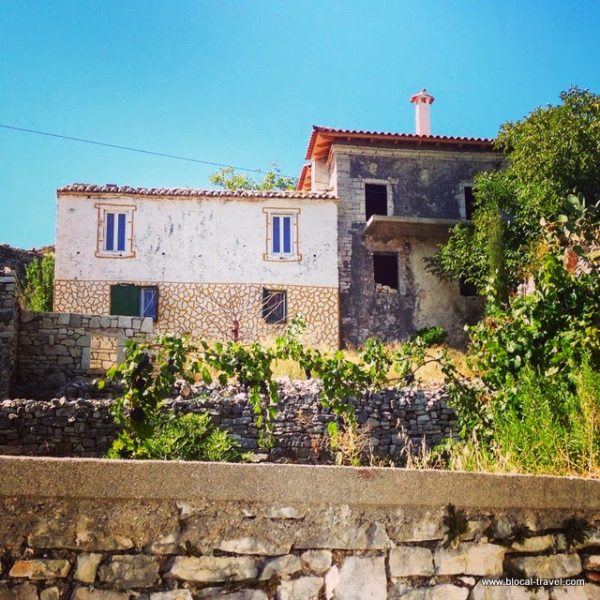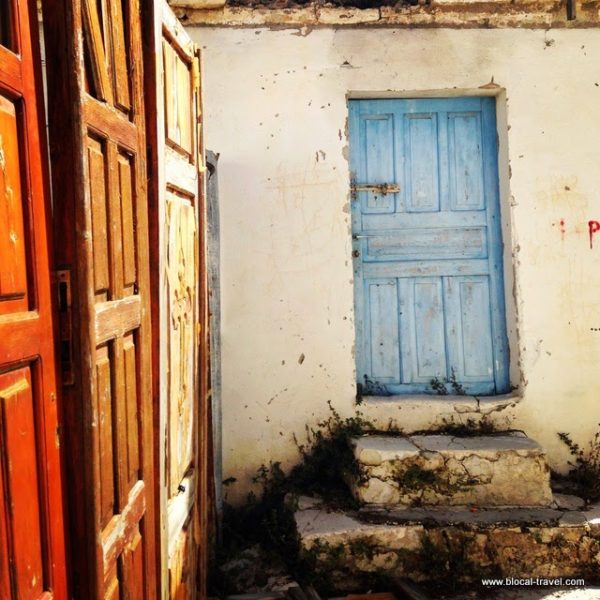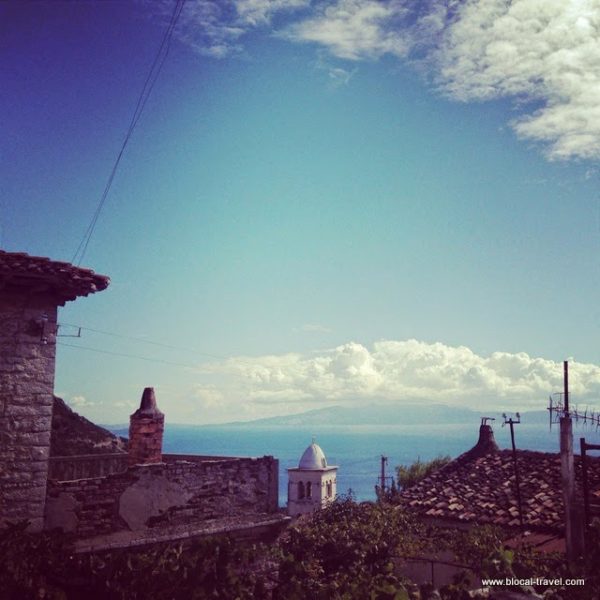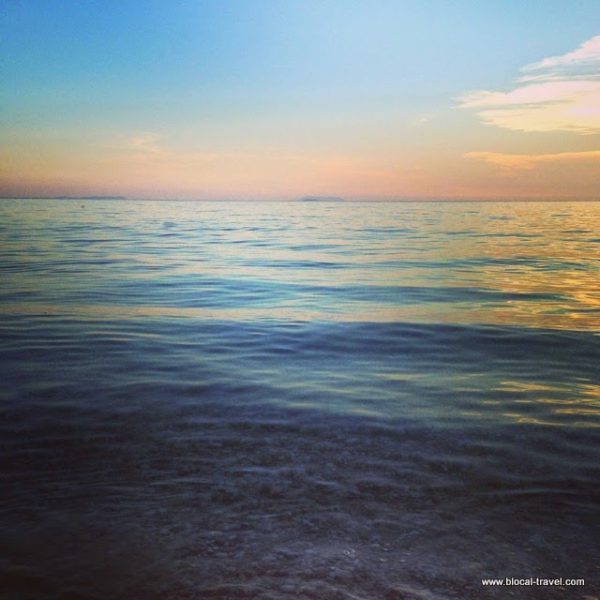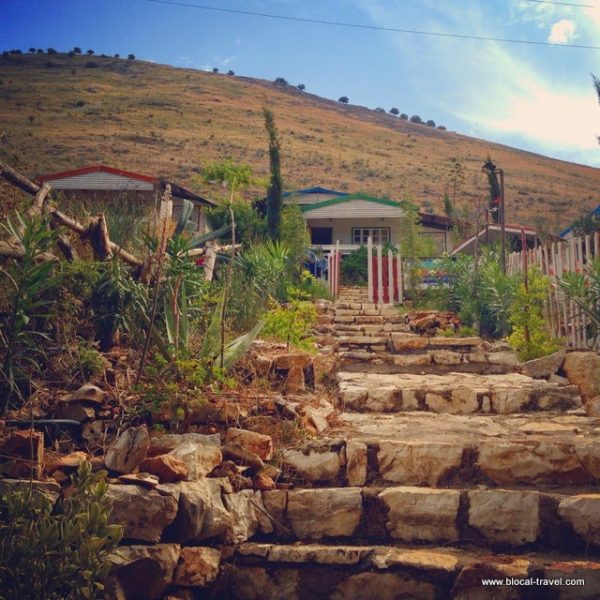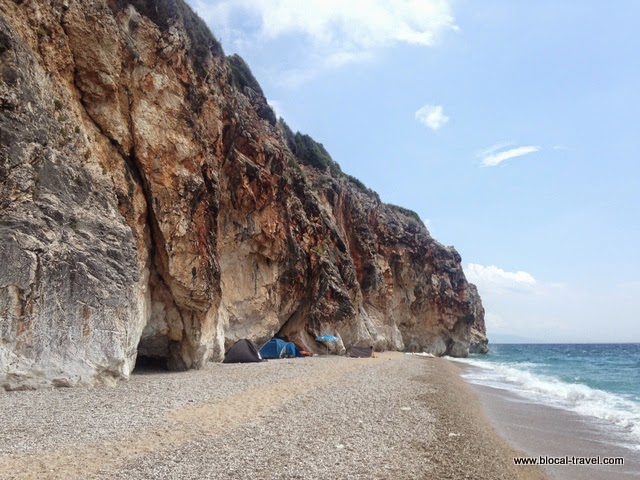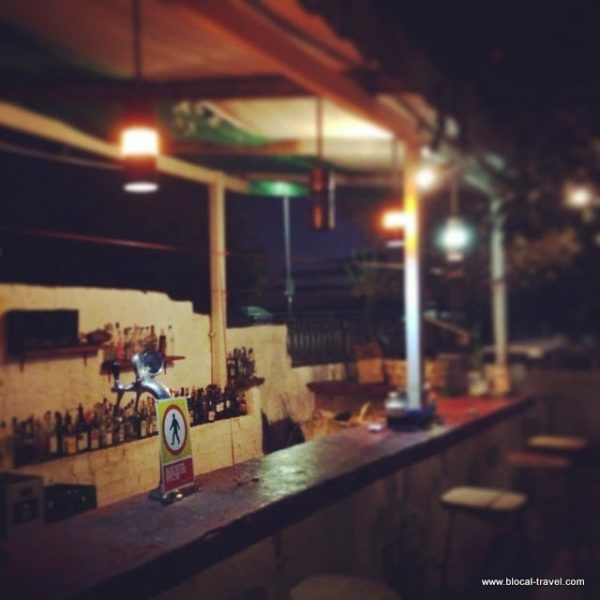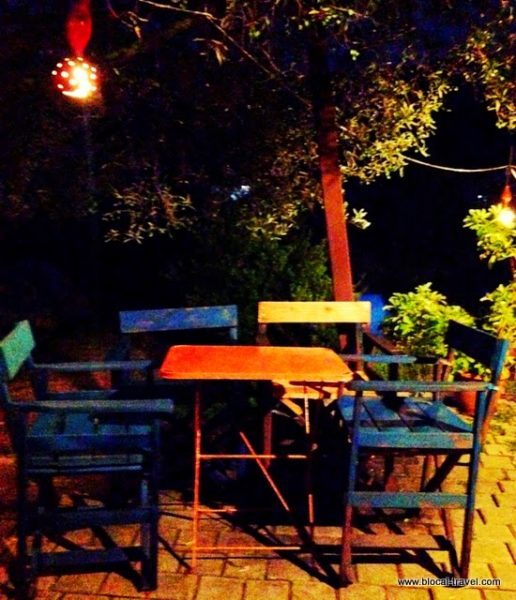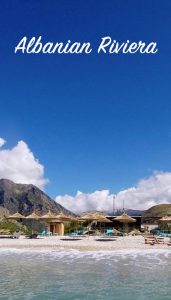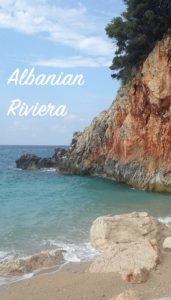18.1K
Our base to explore the Albanian Riviera was Himarë. We liked this small town so much that just after our first relaxing afternoon at Himarë beach we decided to revise our original travel plan and skip the most touristic area of Sarandë to make Himarë the longest stop-over of our Albanian journey: a big four nights out of 13!
Of course, we didn’t spend all four days lying down on Himarë beach (although Silvia would have loved that!) but we explored both the Northern part of the Albanian Riviera (and so Gjipe, Vuno and Jalë) and the southern area (Porto Palermo, Borsh and Qeparo).
The first thing I couldn’t help noticing about the Albanian Riviera is that it is dotted with abandoned bunkers from the Enver Hoxha era. The former Albanian dictator was so consumed by his fear of a military invasion that he literally covered the whole country with concrete bunkers, which still guard both the coast and the hinterland like a neglected army of untended beetles.
Another quintessential feature of the Albanian Riviera is that the Albanian mountain chain runs very close to the coast. Sometimes those rounded, sensual mountains end straight into the sea, forgetting to leave some room for the beach; but when they do remember, you will spot many narrow, secluded beaches nestled among the rocky cliffs.
The downside of this beautiful landscape feature is that to reach the next beach you should drive up to the mountain and then back down again. Undoubtedly, this contributes to the bad reputation of Albanian roads but -at least- the State Highway running along the coast is paved, which is not something you can say for all Albanian state highways!
Many of those small towns along the Albanian Riviera are made of big, modern buildings: sometimes they are even completed, while more often they just have one floor or two completed and inhabited while the rest of the building is just an open structure, which makes them seem some kind of modern stilt-houses.
But, if you look deeper, you will find those characteristic villages made of stone houses, blue doors and a vineyard under each porch, or even ghost villages abandoned during the 1990s’ big exodus. Those ghost villages have been a fascinating discovery of my trip along the Albanian Riviera; I loved wandering around their narrow cobbled streets, surrendering to the powerful image of modern ruins and abandoned buildings climbed by Nature that is taking back its spaces and re-establishing its supremacy on the planet.
The Albanian Riviera is also very wild and populated by many different species of animals: driving along the glorious state highway number 8 we happened to meet donkeys, cows, turtles, frogs, sheep, boars, dogs, goats and many other animals!
Albanian Riviera > Himarë
Himarë has two beautiful bays, beach resorts, restaurants and small shops on the seafront promenade. The real gem, though, is the ancient ghost village on the top of the hill, where you can admire the ruins of the Himarë Castle (which, with a history of 2000 years, shows a past when Himarë was an important centre of the Ionian Coast) and several charmingly abandoned stone houses. We visited it at the sunset and the view from above was magic, both on the bay and on the surrounding mountains.
Albanian Riviera > Gjipe
Gjipe Beach is possibly the best-kept secret of the Albanian Riviera, or perhaps it’s the fact that you reach it by a 30 minutes’ walk (1.5 kilometres) under the sunlight on a red soil path descending the mountain (and, well, you need to ascend it back later, of course…).
You know I can be athletic as the double air bed we were carrying with us to the beach on that hot day but still, Gjipe has been my favourite beach of the Albanian Riviera. It has a wild, simple and kind of alternative atmosphere, clear emerald water and a majestic staging: nestled among the rocky cliffs whose colour ranges from red to grey and white, dotted with the green of the shrubs.
Albanian Riviera > Vuno
Vuno is a lovely village of characteristic stone houses on the glorious state highway number 8. It doesn’t have a beach, and it is located on the mountain between the beaches of Gjipe and Jalë. We stopped there for a byrek, which came with a salad so fresh and tasty that we still dream about those tomatoes!
What I liked about Vuno is that it’s very authentic, with donkeys, hand-carts, traditional houses with their vineyards. No wonder the taste of Vuno’s tomatoes was very authentic too!
Albanian Riviera > Jalë
Jalë is a beach equipped with restaurants, bars and even campings but still, here you can enjoy a very relaxed vibe. By the time we reached Jalë the sky was already cloudy and the temperature was dropping down; it was too cold to swim, so we just had a beer at the cozy bar on the beach and read a book waiting for the sunset. I feel then that I didn’t experience Jalë beach at its best, but maybe it was better to enjoy it on a cloudy day… even in September, in fact, Jalë beach looked too equipped for my taste.
Albanian Riviera > Porto Palermo
Another beach I really liked a lot is Porto Palermo, a small peninsula topped by a stronghold built by Ali Pasha during the 19th century, which also served as a Soviet submarine base during the communist era. As the rain was approaching, we sheltered into the stronghold and wandered around its dark alleys until we reached the panoramic terrace on the top.
On the other side of the peninsula, there is also the small church of Saint Nicholas, built by Ali Pasha in 1818 in honour of his wife.
Even if the small beach is surrounded by wild nature, here I found that urban atmosphere I like so much: not only for the abandoned warehouses and an overall modern ruins’ charm, but also because on Porto Palermo peninsula I spotted the only graffiti out of the whole trip!
Albanian Riviera > Borsh
Borsh is a white long beach perfect if you happen to get bored very fast by sunbathing and prefer a long walk on the foreshore instead (like it usually happens to me). The sea is blue and the water limpid and warm.
We were there on the 1st week of September when beach resorts were closing down. Beach umbrellas were folded, tables were put away, big vans were coming to collect chairs, potted plants and more stuff and even cows were helping to get the end-of-the-season work done! ;-)
Albanian Riviera > Qeparo
Qeparo is a shingle beach with a soft, sandy surprise as you enter the water: a great pleasure for our feet thoughened by four days on Albanian beaches!
But Qeparo is not only a restoring beach: what I liked the most has been the visit to the old town of Qeparo, now a ghost village made up of narrow cobbled alleys and stone houses abandoned and in ruin. The village is on the top of a mountain and even if the road to get there has been the most frightful we drove during the whole road-trip, the view on Qeparo bay from above and the charm of this abandoned village was worth it!
We spent our last evening in Himarë sipping a Korça Beer on the beach, waiting for the sunset. Our exploration of the Albanian Riviera was coming to an end, but the road-trip was carrying on and on the day after we left to start our adventure up-country…but that’s another story!
Albanian Riviera: How to get there
Albanian Riviera runs along the state highway number 8. If you are coming from the North you will drive through the majestic pine trees forest of the Lllogara National Park, reaching the Llogara pass at 2018 meters above the sea level and then descending towards the coast along one of the most panoramic roads I had ever driven.
Albanian Riviera: Where to stay
We stayed at Rondo’s Hotel in the town of Himarë, in a comfortable room overlooking the sea.
If you prefer a more secluded spot surrounded by nature, you should go to the eco-tourism village “Agavia” in Porto Palermo: I just saw its bungalow from the outside and they looked so cute!
Moreover, along the Albanian Riviera, there are many beaches suitable for free camping: I’m sure you will find your perfect spot! :-)
If you are looking for an official camping place instead…keep reading below!
Albanian Riviera: Where to eat
Our favourite dinner has been on a wooden bench at the Himarë Camping, rocking on reggae music and surrounded by many colourful hipster lights. Here we found an unique atmosphere, and we enjoyed chatting with the owner about the story and the charm of Himarë ghost town.
Red Indian Rock Café in Himarë: a nice place where we had a bbq and a Greek salad with fresh cheese. The owner is very Harley Davidson-ish, but with the sweetest eyes on earth; he made us a tasty dinner under the colourful lights hung up among the olive trees.
We also loved the byrek (who doesn’t, anyway?), especially the one we ate in a small restaurant in Vuno (aka the place of our tomatoes’ orgasm) and the one from a bakery at the junction between SH8 and the road to Qeparo beach (where we tasted it with the traditional buttermilk, sharing our meal and travel stories with an Albanian living in Italy who was proud to tell us about his native country).
PEEK THROUGH | You find all these beautiful villages on the Albanian Riviera in my video “My 13-days road-trip around Albania…in 130 seconds”
You can hover over these (or any image) to quickly pin it!
